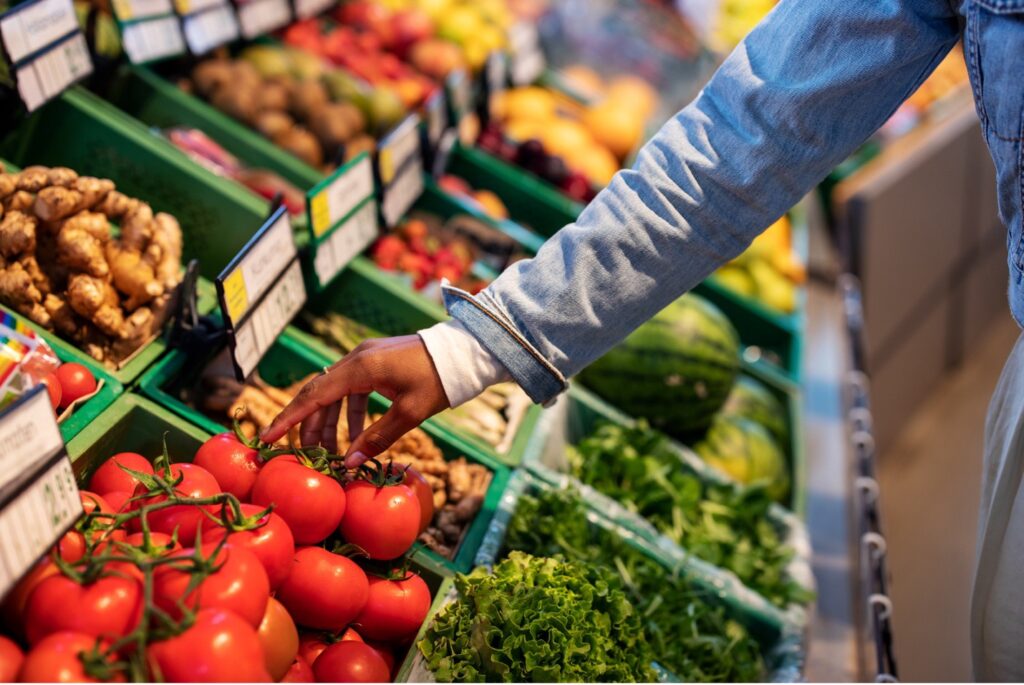Groceries And The Environment: What We Can Change

Every grocery trip leaves a footprint. From production and packaging to transportation and storage, the food we buy has direct environmental consequences. By making informed choices, we can reduce waste, conserve resources, and contribute to a healthier planet.
.
The Cost of Food Production
Agriculture accounts for more than a quarter of global greenhouse gas emissions. Meat, particularly beef and lamb, requires significant land, feed, and water. Producing one pound of beef, for example, can take over 1,800 gallons of water, while also releasing methane, a gas much more potent than carbon dioxide. In contrast, fruits, vegetables, and legumes generally have a lower impact, though not all plant-based products are equally sustainable. Almonds, rice, and avocados each demand substantial irrigation, particularly in regions already struggling with drought.
A more balanced diet that emphasizes plant-based foods can lower emissions and conserve water. This does not necessarily mean eliminating meat or dairy altogether. Even small reductions, such as choosing chicken instead of beef or incorporating one or two vegetarian meals per week, create measurable benefits when scaled across millions of households.
Packaging and Single-Use Plastics
Supermarkets are filled with packaging that is convenient but wasteful. Plastic bags, multilayer snack wrappers, and shrink-wrapped produce are difficult to recycle and often end up in landfills or waterways. Globally, less than 10 percent of plastic waste is recycled, meaning the majority contributes to pollution.
As consumers, we can push change by selecting unpackaged produce, carrying reusable shopping bags, and buying products that use recyclable or compostable packaging. Some grocery stores now allow customers to bring containers for bulk items, a model that significantly reduces packaging waste. When we consistently choose options with less plastic, we also send a clear message to retailers and manufacturers that sustainability matters.
Transportation and Storage Impacts
Food miles, the distance our groceries travel, also contribute to emissions. Grapes from Chile, salmon from Norway, avocados from Mexico, and berries from across the globe are made available year-round. The convenience is appealing, but transporting perishable goods across continents requires energy-intensive refrigeration and distribution networks. Cold chain logistics services ensure freshness but rely on continuous electricity and fuel, which add to carbon emissions.
One way to reduce this footprint is to prioritize local and seasonal foods. Tomatoes grown in your region during summer, for example, often have a fraction of the environmental cost compared to greenhouse-grown imports in winter. Supporting local farmers’ markets or community-supported agriculture programs cuts down on transportation energy, keeps money in local economies, and helps reduce reliance on global supply chains that strain resources.
Food Waste and Its Ripple Effects
Roughly one-third of all food produced globally is wasted. In the United States, this equals nearly 40 million tons each year. Wasted food is more than just lost meals, it represents squandered land, water, energy, and labor. When discarded food decomposes in landfills, it generates methane, adding to climate change.
Households play a key role in reducing waste. Meal planning, creating realistic shopping lists, and storing food correctly can prevent spoilage. Leftovers can be frozen or repurposed into new dishes instead of being thrown away. On a larger scale, supporting organizations that redirect unsold groceries to food banks ensures edible food helps people rather than filling dumpsters.
Sustainable Shopping Habits
Each grocery decision, no matter how small, contributes to a collective impact. Opting for products with eco-certifications like organic or fair trade supports sustainable farming practices and fair labor standards. Purchasing in bulk reduces packaging waste and often saves money. Refillable water bottles and reusable coffee cups cut down on single-use plastics, while reusable produce bags replace thin plastic alternatives.
Another powerful action is reducing the demand for highly processed foods, which typically require more energy for production, packaging, and distribution. Cooking more meals at home with whole ingredients reduces waste and gives us greater control over where our food comes from. These habits, while small individually, compound into significant reductions when adopted across communities.
Building Momentum Together
Addressing the environmental impact of groceries is not just about individual choices. Retailers, food producers, and governments all play important roles. Supermarkets can adjust supply chains to prioritize local goods, reduce unnecessary packaging, and donate surplus food. Policy changes can incentivize sustainable farming or impose stricter requirements for reducing waste. But as consumers, we influence these shifts by supporting businesses and programs that align with sustainability goals.
The groceries we purchase each week shape both our diets and our environment. Every choice, from what we buy to how we store and dispose of it, carries weight. By eating more plant-forward meals, choosing products with minimal packaging, supporting local growers, and cutting down on waste, we create momentum for a healthier planet. We all share responsibility for the environmental cost of food, but we also share the power to reshape the system. Together, we can make our grocery carts part of the solution, creating a more sustainable food future for ourselves and for generations to come. For more information, look over the accompanying resource below.


